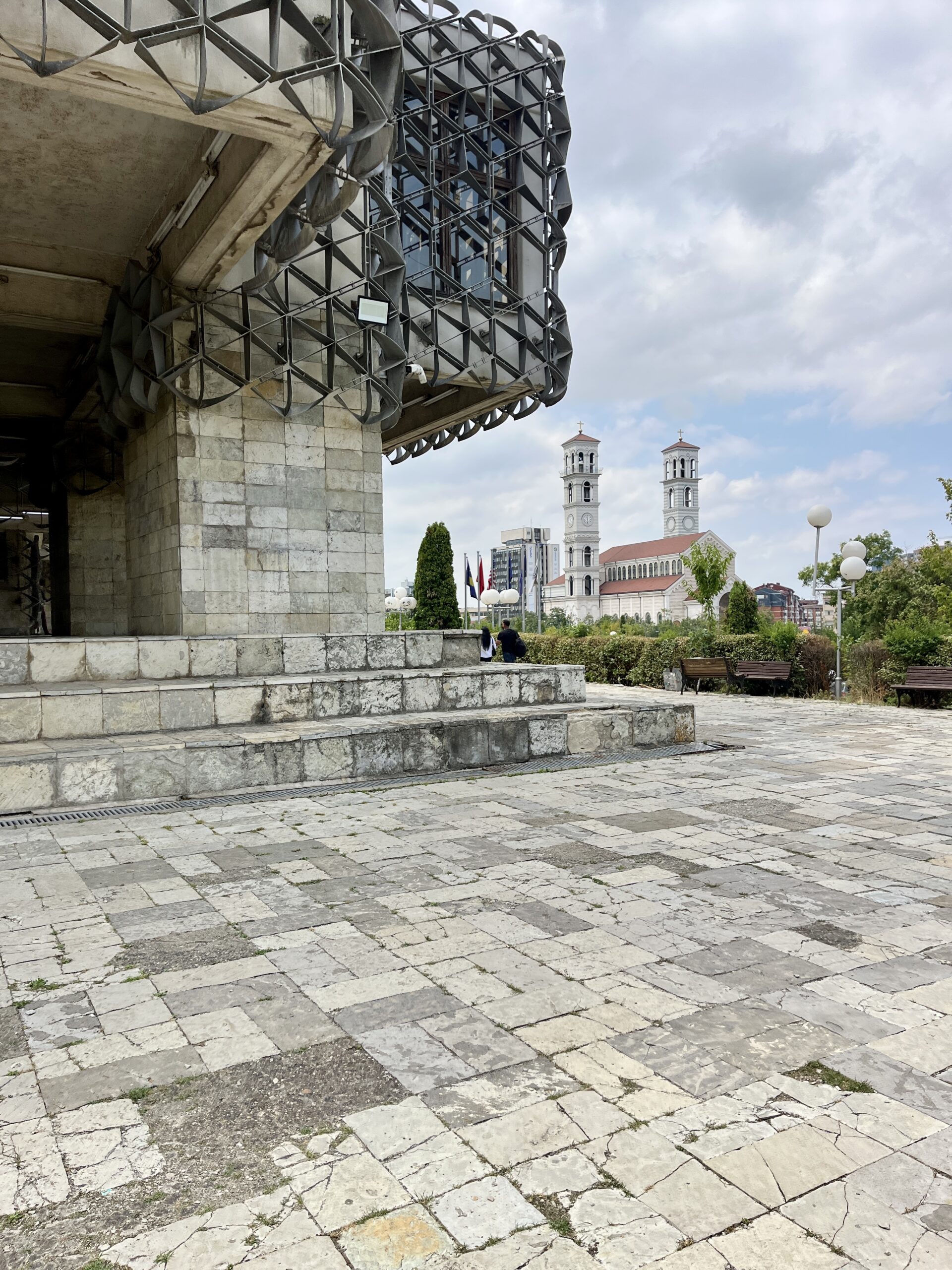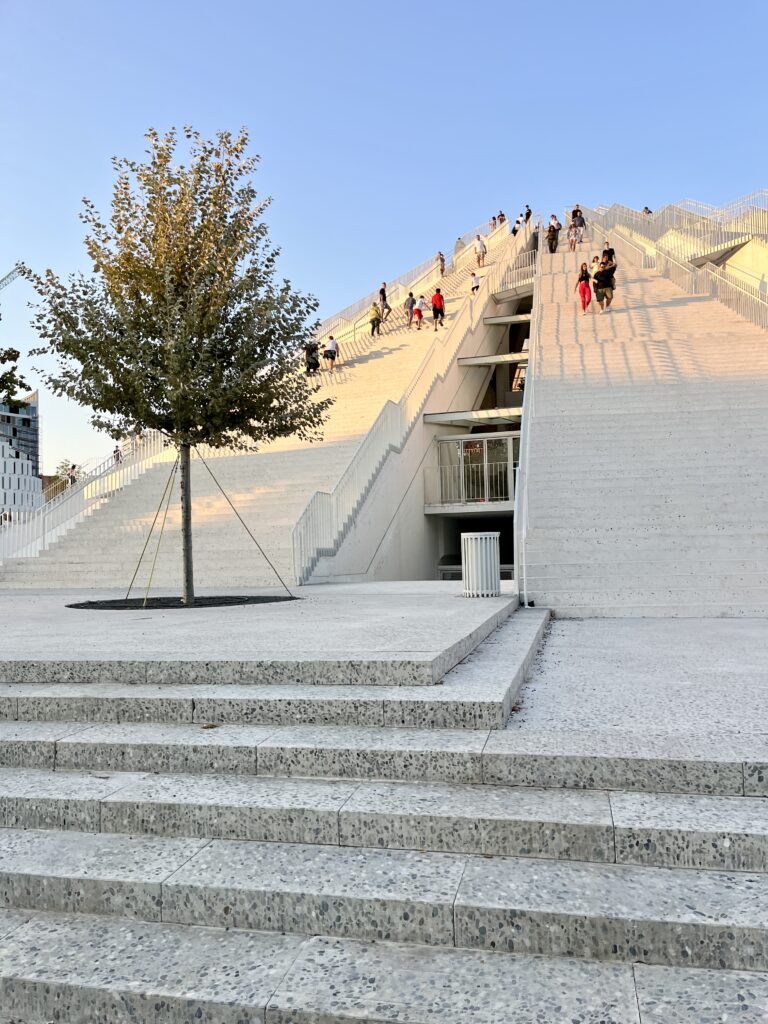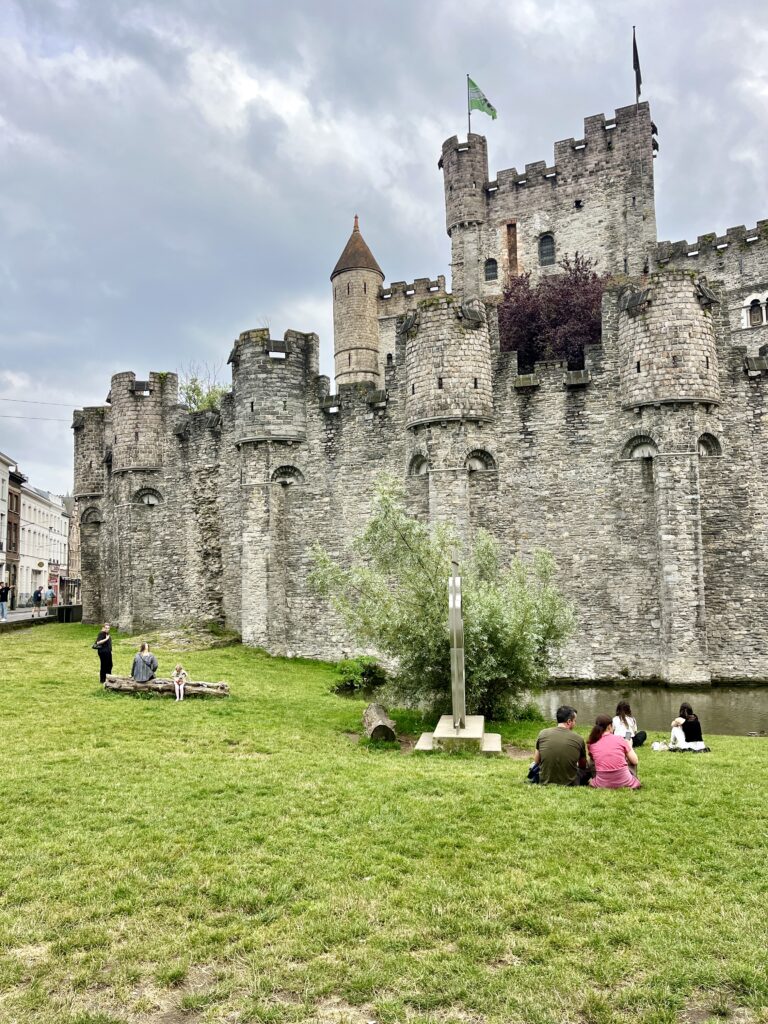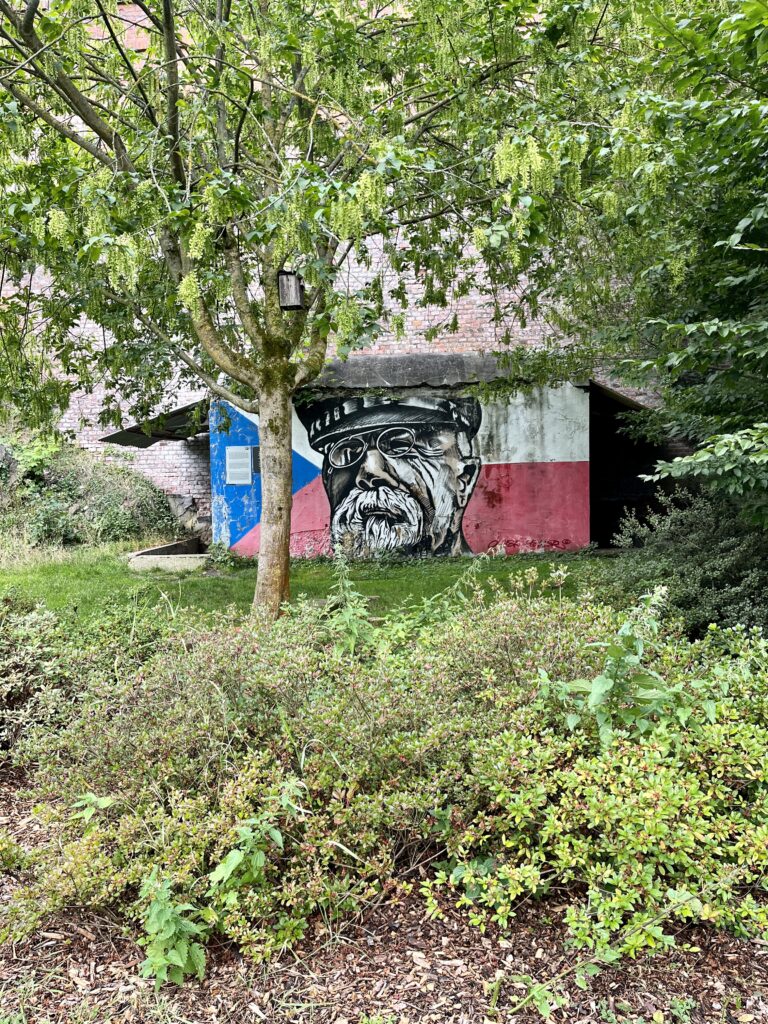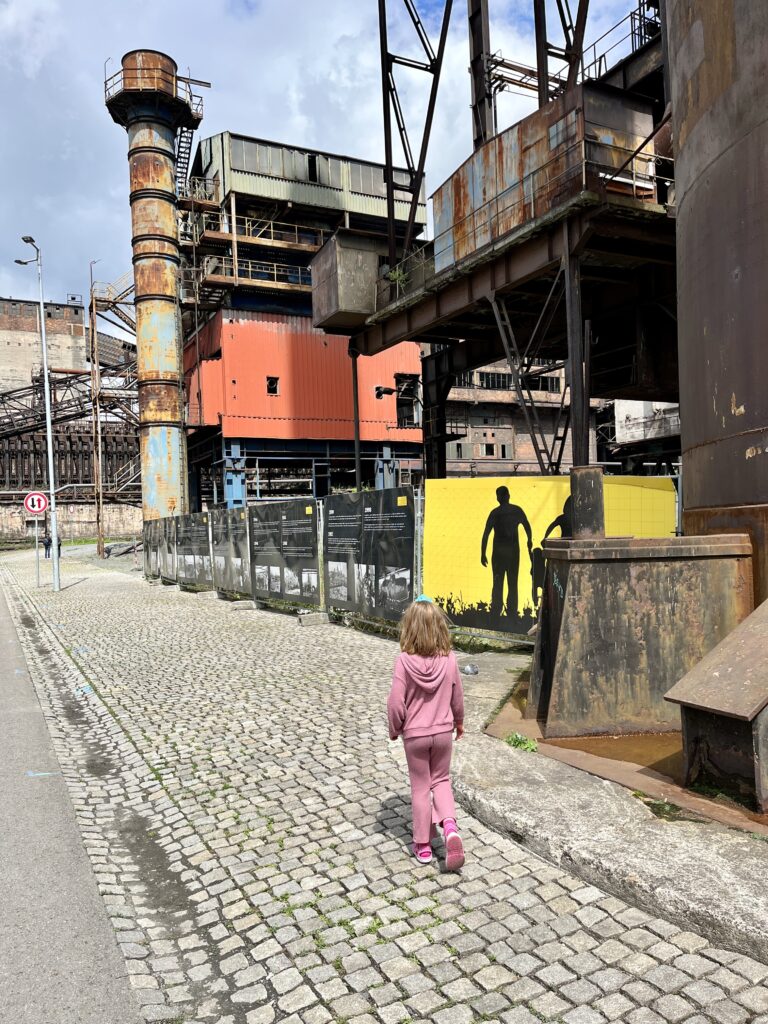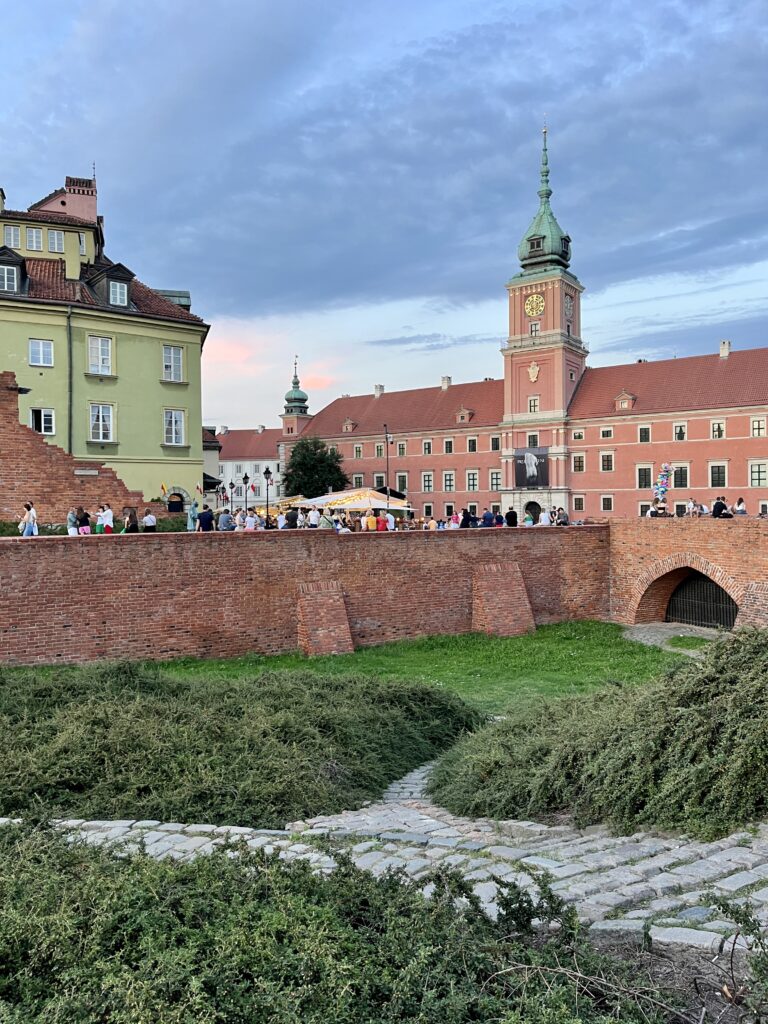Balkans Road Trip- Kosovo, North Macedonia, Bulgaria
Traveling to the Balkans unlocks two parts of who I am- my upbringing in Muslim Russia and my time spent at boarding school in Southwest Germany. Each Balkan country is distinct, but parts of all remind me of home. That’s why, in part, I’ve traveled to every country in the Balkans except for three- Kosovo, North Macedonia, and Bulgaria.
Turning 40, a milestone year, in 2025 was the excuse I needed to visit the remaining Balkan countries. Should I sneak away for a week while my family spends a working month in Athens, Greece or invite dear friends? When some pick the cobblestone streets of Paris or the coastal villages of Italy, who would want to explore the Balkans with me? My housemate Keith and my long-time friend from International Justice Mission Andrew.
We created a Google Map and started pulling in off-the-beaten path recommendations from Atlas Obscura, Wander Lush, blogs, and other sites. Here’s our week in Kosovo, North Macedonia, and Bulgaria.
Pristina, Kosovo
We flew into Skopje, North Macedonia on a Sunday evening in August and woke up the next morning to board a bus to Pristina, Kosovo. We booked our bus tickets online for just under $17 round trip on Gjirafa Travel months in advance. Once at the Skopje Central Bus Station, find a ticket station to pay the bus station fee (around one euro).
The bus is more like a large van. (In Russia, we call them “marshrutka.”) The journey is scheduled to take two hours, but the 8am bus took 1.5 hours, including the border crossing. (Your passports are collected inside the van by border control without ever needing to get off the bus. Right after border control, there’s a restroom break since there are no restrooms inside the van…obviously.)
By 9.30am, we were walking the streets in Pristina. In fact, we never took public transportation or a taxi. We walked the entire eight hours we were in Kosovo’s capital before boarding the 6pm van back to Skopje. (It’s worth noting the journey back took two hours due to back up at the border.) Here are the highlights in Pristina, the capital of the world’s second-newest country.
Eat:
- Carrot cake at BOHO, a popular restaurant with a garden patio.
- Local cuisine at Liburnia, a design-forward top-rated restaurant down a cobblestone street. (We walked in without a reservation and were turned away. Despite this, Liburnia was the most recommended spot to us by friends.)
- Meatballs at Soma Book Station, a spacious, beautifully-decorated restaurant with indoor and outdoor seating.
- Spread of food at Renaissance Restaurant, a family-run restaurant with a set price of 25 Euros for a filling dining experience.
Drink:
- Local beer at MIQT Pub, a bar with indoor and outdoor seating.
- Wine from Soma Slow Food, a beautifully designed restaurant inside a large park.
Do:
- Find the statues that honor U.S. leaders- President Bill Clinton, Secretary of State Madeleine Albright, and Senator Bob Dole. These statues honor leaders who came to Kosovo’s aid during the Kosovo War.
- Learn about the Kosovo War from all different perspectives at the Reporting House, a museum inside the city’s first shopping center telling stories from journalists’ perspectives.
- Read a book at Pristine Pour, a beautifully designed specialty coffee shop with outlets and Wi-Fi.
- Reflect on the history of Kosovo and the events that led to their independence at the Museum “House of Independence of Kosovo “Dr. Ibrahim Rugova””.
- Shop fresh produce at the Old Green Market, a busy market selling fruit, electronics, and more.
- Visit the Muzeu “Çast,” the world’s first museum honoring victims of wartime sexual violence. The museum honors victims, but use your best judgment on whether or not it’s right for you to visit.
- Walk inside the National Library of Kosovo to see its unique design inside and out. Th,ere’s an abandoned Serbian Orthodox church nearby worth seeing.
See:
- Courtyard at The Great Mosque built in the 15th century.
- Murals by Asaz One in the underpass to the north of the Pristina Bus Station.
- Newborn Monument, a statue that spells “Newborn” with a decorated theme that changes every year.
- Public art on building’s walls along Sylejman Vokshi.
- Unique architecture at the Youth & Sports Center, a sports complex with a design that looks like a mix of brutalism and futurism.
- View of the city from Cathedral of Saint Mother Teresa, a large 2010 cathedral with a two-euro bell tower view.
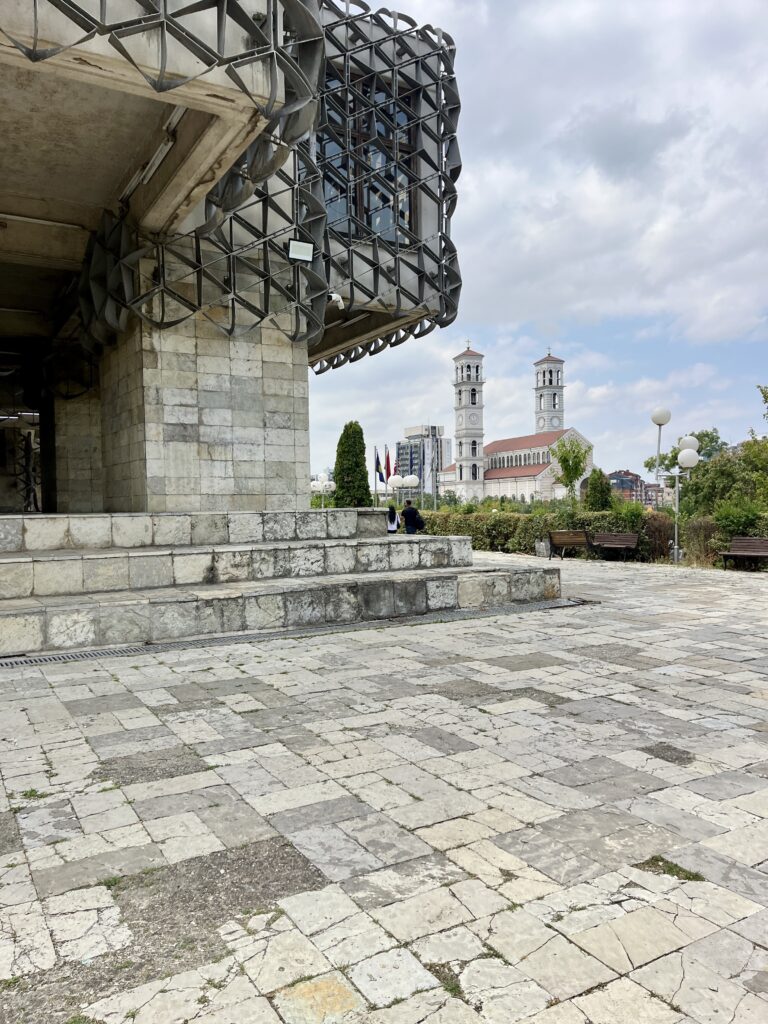



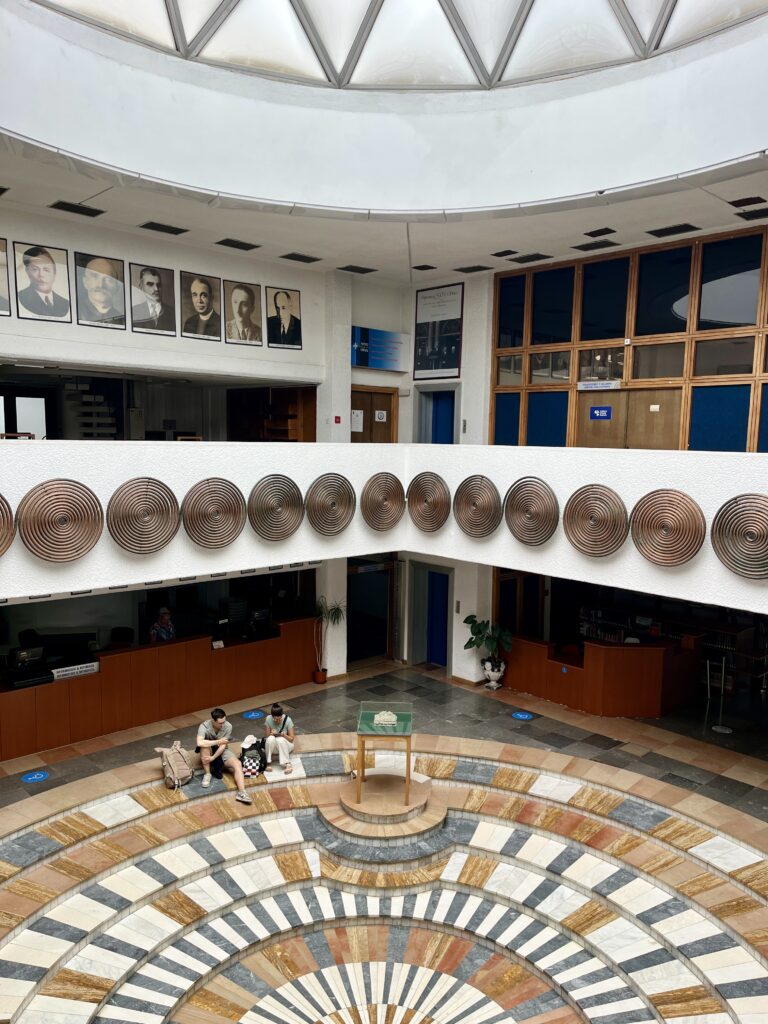

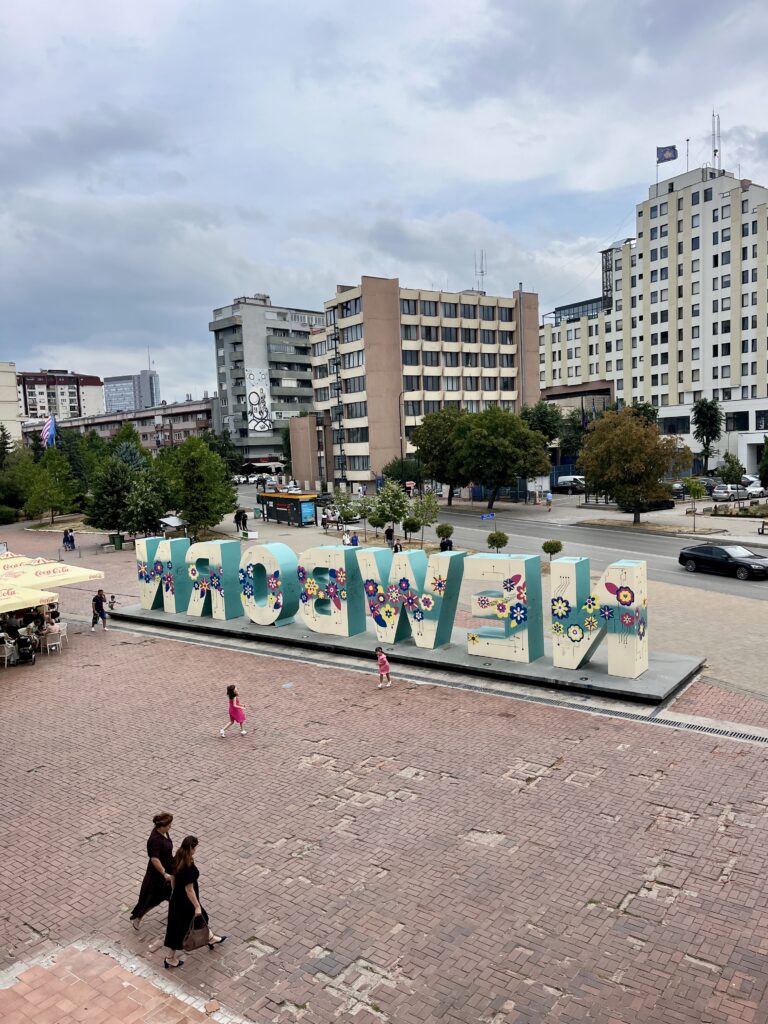
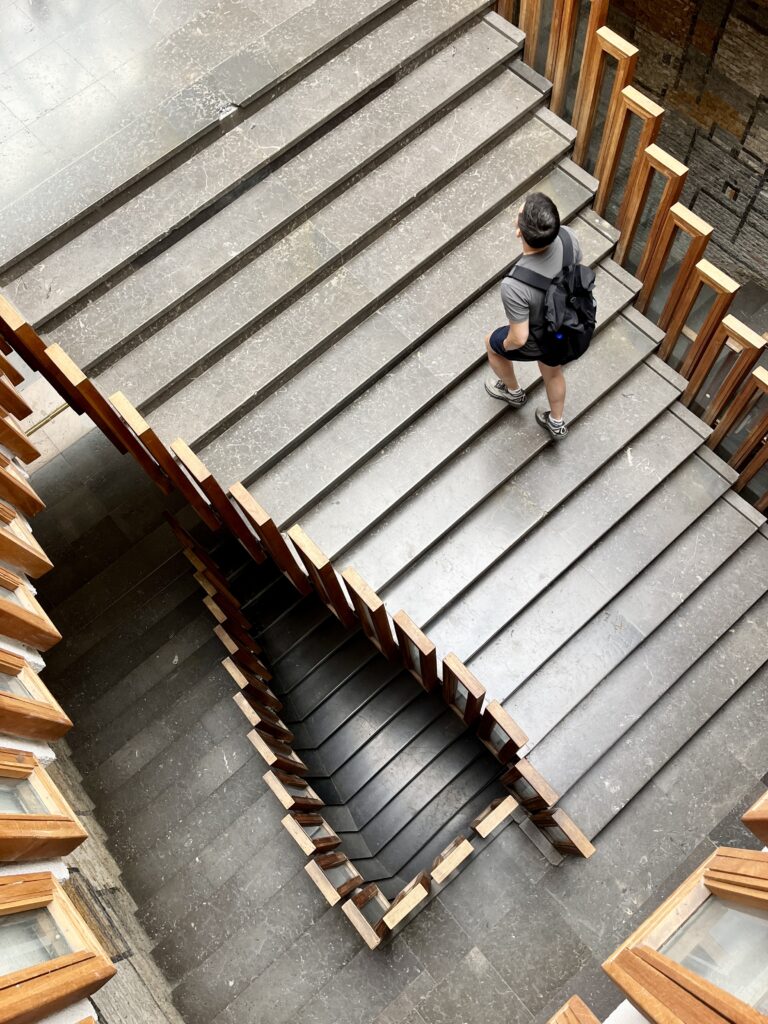
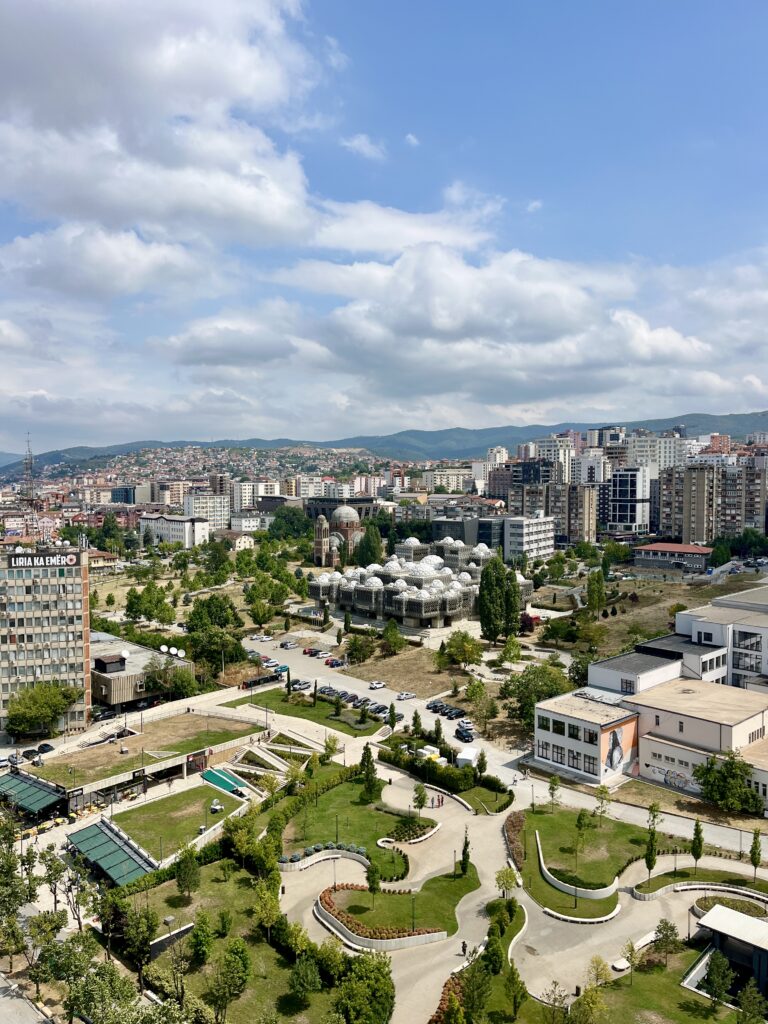
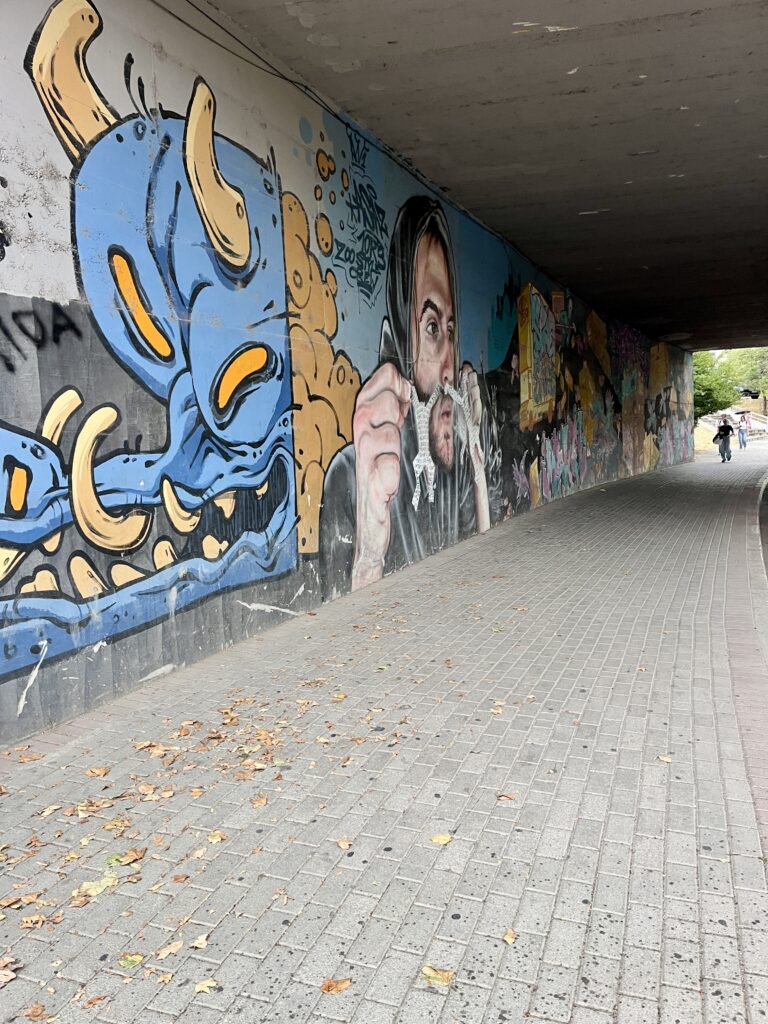
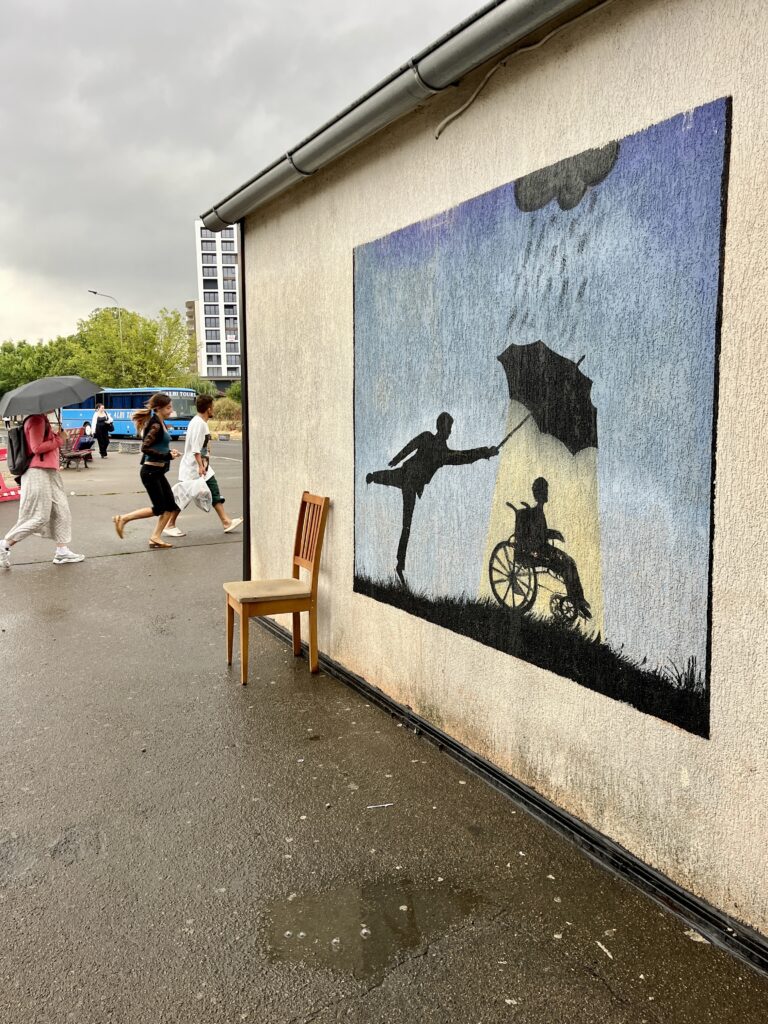
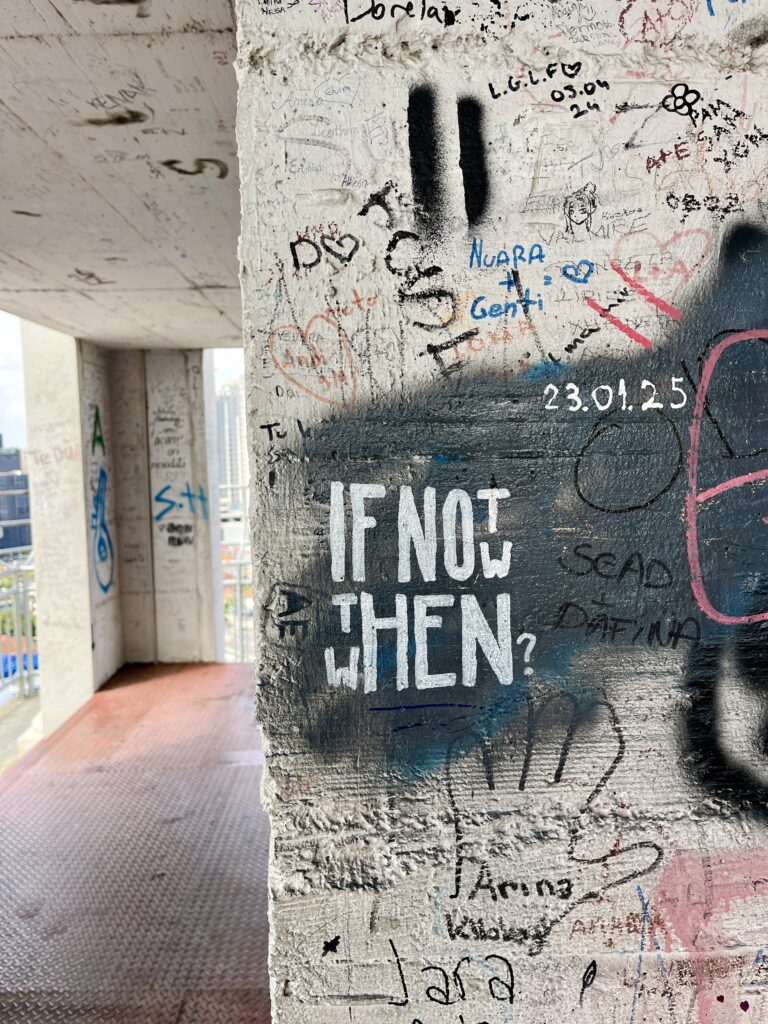
Skopje, North Macedonia
Returning from Pristina in the evening and leaving the next day on a 17.30 bus to Sofia, Bulgaria gave us a solid day to explore North Macedonia’s capital. Skopje is a fascinating capital. The first record of the city was in the 1st century, and throughout it’s long history, it switched hands between many- the Romans, Bulgarians, Ottomans, and Serbians to name a few. Twice, Skopje was almost entirely destroyed by an earthquake. Decades after the second one, the government tried to beautify the city by erecting dozens of statues and neo-classical buildings. The result is surprises around every corner if you wander downtown. Here are the highlights.
Eat:
- Baklava from Baklava „Angela Merkel“, a tiny shop in the Old Bazaar that the former German Chancellor visited in 2008.
- Layered apple tart from Maggio, a nicer restaurant inside a hotel.
- Meatballs from Restaurant An, a spacious restaurant inside a historic building in the old part of town.
- Pancakes from Blueberry & Basil, a small breakfast spot with quality food.
Drink:
- Cocktails at Lobby, a popular bar with indoor and outdoor seating.
- Latte from Arrosto Caffe, a small coffee shop with friendly baristas.
- Local craft beer at Old Town Brewery, a spacious brewery with a beer flight with generous pours.
- Wine at Winery Brzanov, a local winery with 30 different labels.
Do:
- Learn about the Jewish community in the Balkans at the Holocaust Memorial Center for the Jews of Macedonia.
- Walk across the Art Bridge to see many statues lining both sides. To find even more statues, wander either side of the bridge.
- Visit the Old Bazaar, which was the center of commerce during the Ottoman era.
See:
- Sites along the Vardar River, including the 15th century Stone Bridge.
- Unique architecture at Post Office of North Macedonia’s Head Office.
- View of the city from Skopje Fortress, built in the 6th century to help defend the city.












Sofia, Bulgaria
Boarding a Flixbus in Skopje, it was a five-hour ride with a stop at North Macedonia’s border and then at the Bulgarian border a few seconds later. The bus is a regular travel bus. It was under booked so everyone got an entire row to enjoy. After arriving at Sofia’s Central Bus Station, we stayed for two days before flying Turkish Airlines onto Istanbul.
Sofia was the surprise of the trip. A much larger city than Pristina and Skopje, Sofia is the cosmopolitan adventure we wanted. The metro takes you throughout the capital of one of Europe’s oldest countries. Roman ruins in metro stations, 4th century churches, lush parks, and cafes throughout, there’s much to do in Sofia. Here are the highlights.
Eat:
- Bulgarian sausage and eggs at Rainbow Factory, a popular cafe with trams whizzing just outside.
- Chilled yogurt and cucumber soup at The Little Things, a cozy restaurant with innovative Bulgarian dishes.
- Fermented crust miso butter at Cosmos, a more fancy restaurant with elevated local dishes and a superb local wine list.
- Sourdough rolls filled with cheese and wild garlic from &bread, a tiny bakery with popular pastries.
Drink:
- Cocktails from 5L Speakeasy Bar, a large bar accessible only if you unlock the entrance with the correct key.
- Daquiris from Edin Bar, a popular bar along tram tracks.
- “Electromade” from Urban Embassy, a specialty coffee shop inside a tiny space with homemade lemonade with electrolytes.
- Latte from Coffee Syndicate, a two-story coffee shop with views of the mountains, trendy magazines, and tile counters.
- Local beer from Raketa Rakia Bar, a spacious restaurant decorated with nostalgic memorabilia that serves noteworthy dips with warm bread.
Do:
- Browse local guide books in English at Gifted – Urban Art & Culture Hub, a small gift shop filled with local products.
- Buy “colorful salt” (a Bulgarian spice mix) from the Central Market Hall, a grocery store inside a historic market space.
- Learn about everyday life under communism at The Red Flat, a tiny apartment museum.
- Read about Sofia’s street art at Mahala Independent Bookstore, a design-forward bookstore with a reading loft.
- Shop for Soviet era trinkets at the market outside of the Patriarchal Cathedral of St. Alexander Nevsky, a grand neo-Byzantine cathedral built at the end of the 19th century.
See:
- Church of Saint George, the city’s oldest building dating to the 4th century.
- Gems at the Earth & Man National Museum, a museum in a beautiful space with 20,000+ minerals and an exhibit on how smart phones are made from natural resources.
- Murals by emircA around the Faculty of Physics at the University of Sofia.
- Roman ruins dating 2,000 years by Metro station Serdika II.
- Soviet era statues discarded to the gardens at the Museum of Socialist Art and Monuments.















